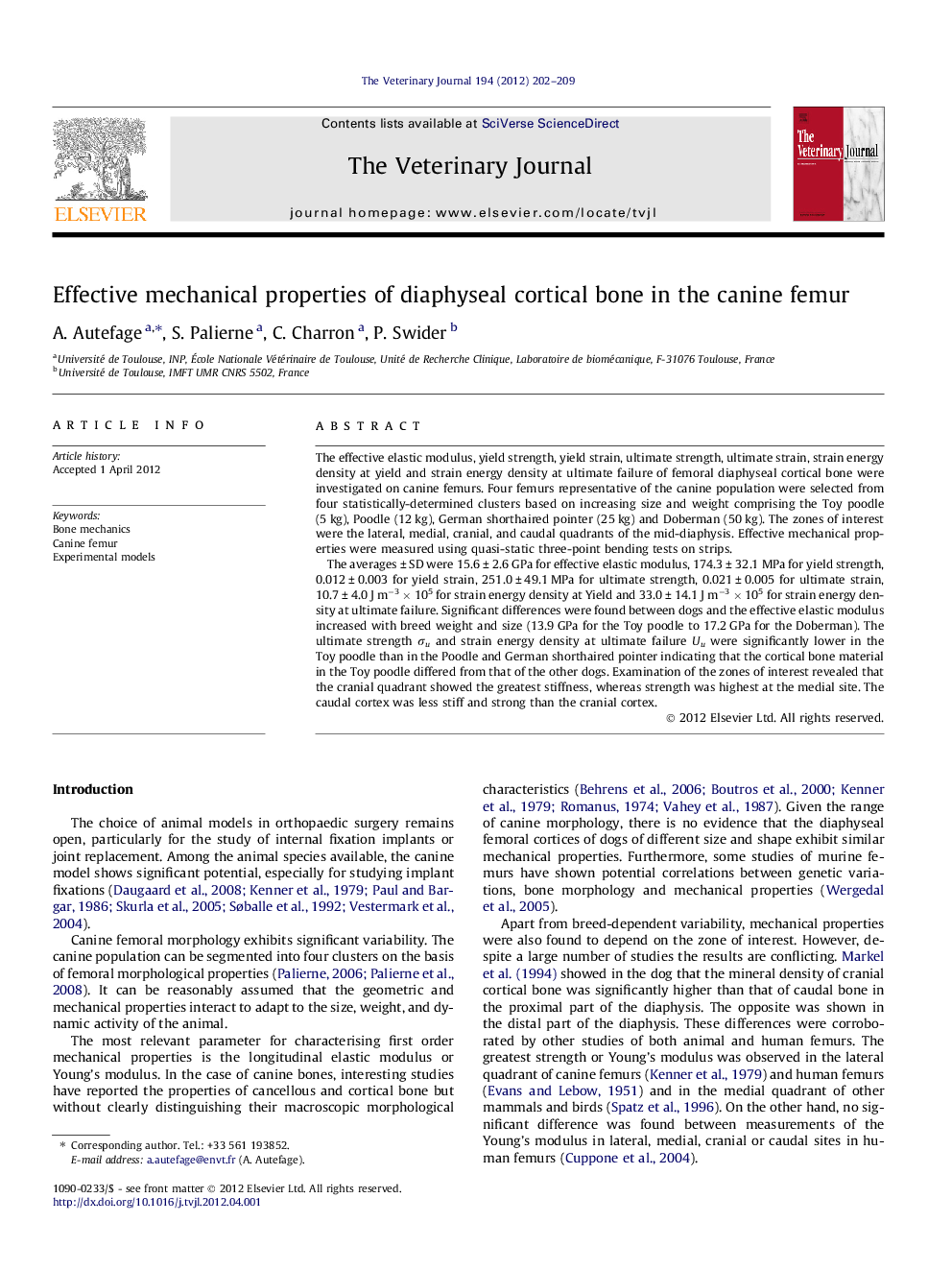| کد مقاله | کد نشریه | سال انتشار | مقاله انگلیسی | نسخه تمام متن |
|---|---|---|---|---|
| 2464315 | 1111790 | 2012 | 8 صفحه PDF | دانلود رایگان |

The effective elastic modulus, yield strength, yield strain, ultimate strength, ultimate strain, strain energy density at yield and strain energy density at ultimate failure of femoral diaphyseal cortical bone were investigated on canine femurs. Four femurs representative of the canine population were selected from four statistically-determined clusters based on increasing size and weight comprising the Toy poodle (5 kg), Poodle (12 kg), German shorthaired pointer (25 kg) and Doberman (50 kg). The zones of interest were the lateral, medial, cranial, and caudal quadrants of the mid-diaphysis. Effective mechanical properties were measured using quasi-static three-point bending tests on strips.The averages ± SD were 15.6 ± 2.6 GPa for effective elastic modulus, 174.3 ± 32.1 MPa for yield strength, 0.012 ± 0.003 for yield strain, 251.0 ± 49.1 MPa for ultimate strength, 0.021 ± 0.005 for ultimate strain, 10.7 ± 4.0 J m−3 × 105 for strain energy density at Yield and 33.0 ± 14.1 J m−3 × 105 for strain energy density at ultimate failure. Significant differences were found between dogs and the effective elastic modulus increased with breed weight and size (13.9 GPa for the Toy poodle to 17.2 GPa for the Doberman). The ultimate strength σu and strain energy density at ultimate failure Uu were significantly lower in the Toy poodle than in the Poodle and German shorthaired pointer indicating that the cortical bone material in the Toy poodle differed from that of the other dogs. Examination of the zones of interest revealed that the cranial quadrant showed the greatest stiffness, whereas strength was highest at the medial site. The caudal cortex was less stiff and strong than the cranial cortex.
Journal: The Veterinary Journal - Volume 194, Issue 2, November 2012, Pages 202–209